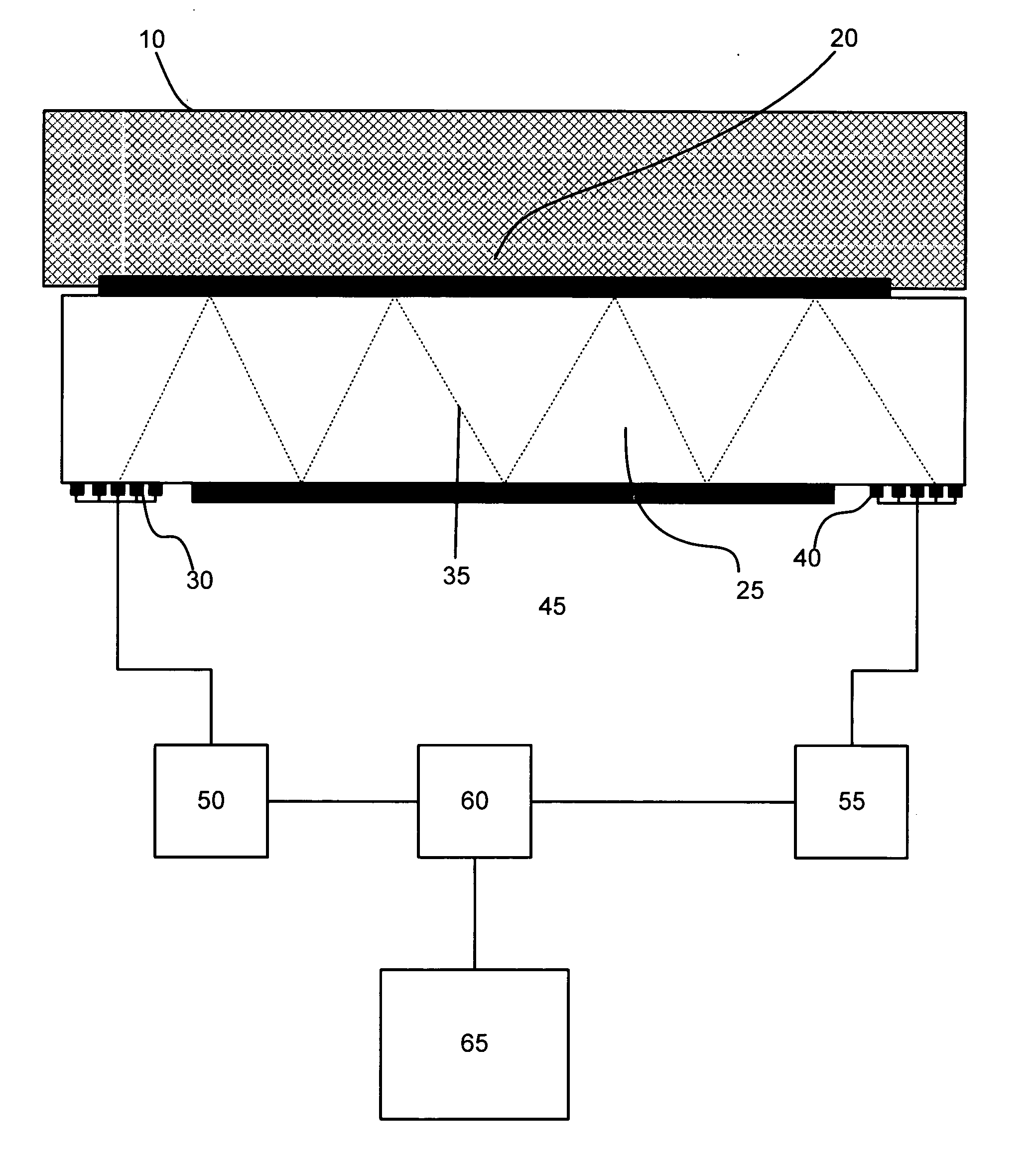Measurement, compensation and control of equivalent shear rate in acoustic wave sensors
a technology of acoustic waves and sensors, applied in the field of acoustic waves, can solve the problems of limiting utility and reliability, difficult to successfully apply process control or operate on moving platforms, and affecting the accuracy of acoustic waves,
- Summary
- Abstract
- Description
- Claims
- Application Information
AI Technical Summary
Benefits of technology
Problems solved by technology
Method used
Image
Examples
Embodiment Construction
[0084] In these specifications, an acoustic wave device is considered a device comprising a crystalline material having a plurality of electrodes, and that in response to electrical power presented between at least a pair of these electrodes, provides a corresponding movement of the crystal face, and conversely, generates an electrical signal in the electrodes in response to power applied to the crystal face.
[0085] The preferred embodiment utilizes a known method for viscosity measurement, comprising an acoustic wave device comprising a piezoelectric crystal 25, with an input 30 and output 40 transducers coupled to it. The input transducer is coupled to a power source 50, which injects a harmonic signal of known power level and frequency. The energy coupled to the input transducer causes an acoustic wave 35 to travel in the crystal, and impart a wave to the fluid 10. Since energy is transferred to the fluid 10, the level of power that arrives at the output transducer 40 is lower th...
PUM
| Property | Measurement | Unit |
|---|---|---|
| shear rate | aaaaa | aaaaa |
| viscosity | aaaaa | aaaaa |
| frequency | aaaaa | aaaaa |
Abstract
Description
Claims
Application Information
 Login to View More
Login to View More - R&D
- Intellectual Property
- Life Sciences
- Materials
- Tech Scout
- Unparalleled Data Quality
- Higher Quality Content
- 60% Fewer Hallucinations
Browse by: Latest US Patents, China's latest patents, Technical Efficacy Thesaurus, Application Domain, Technology Topic, Popular Technical Reports.
© 2025 PatSnap. All rights reserved.Legal|Privacy policy|Modern Slavery Act Transparency Statement|Sitemap|About US| Contact US: help@patsnap.com



